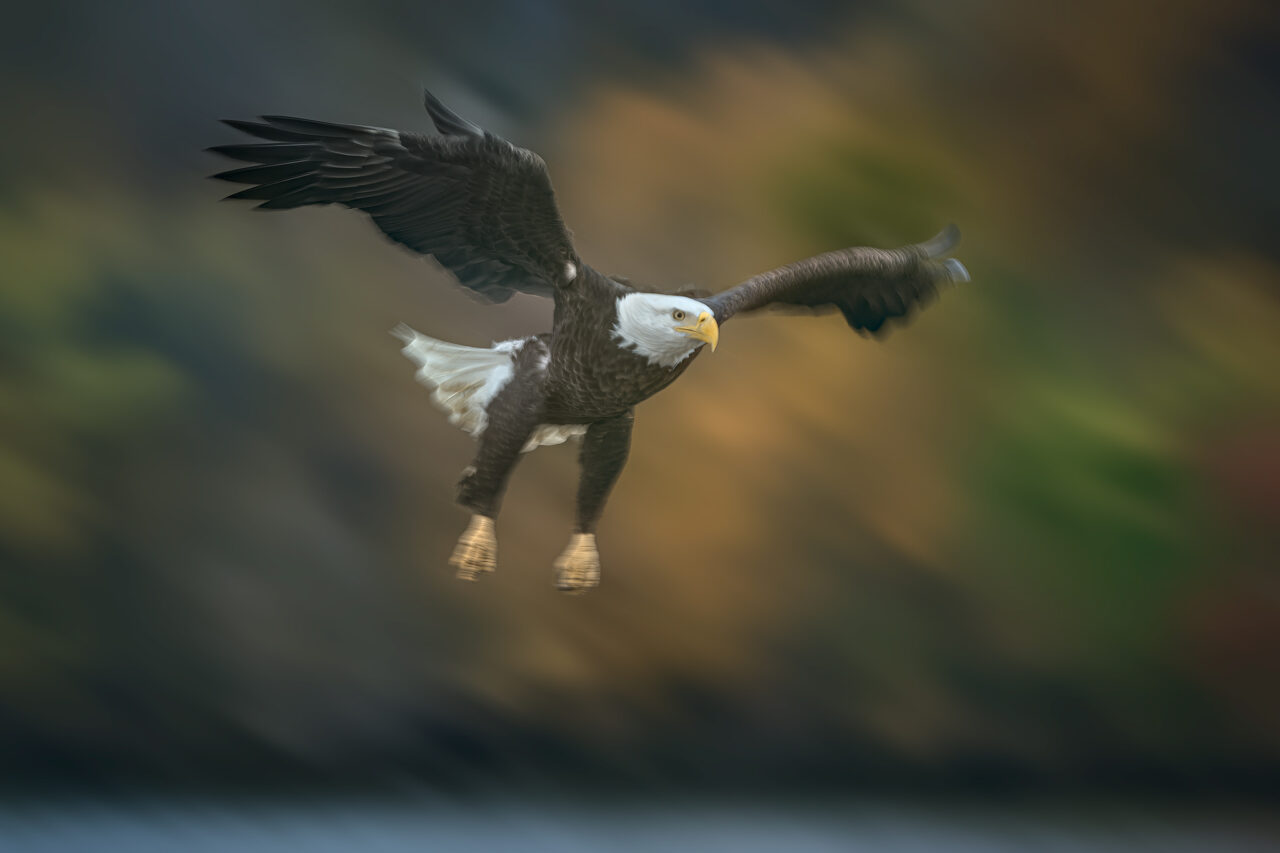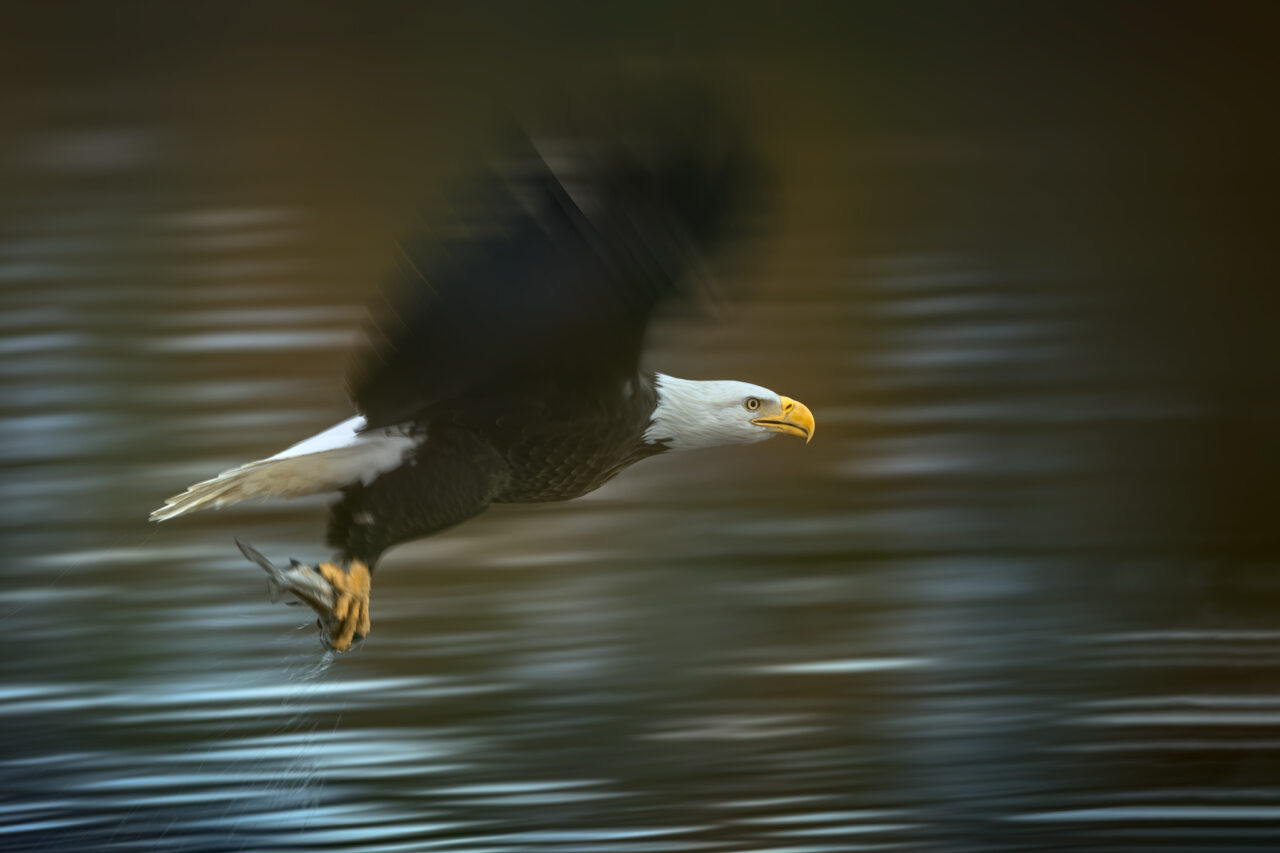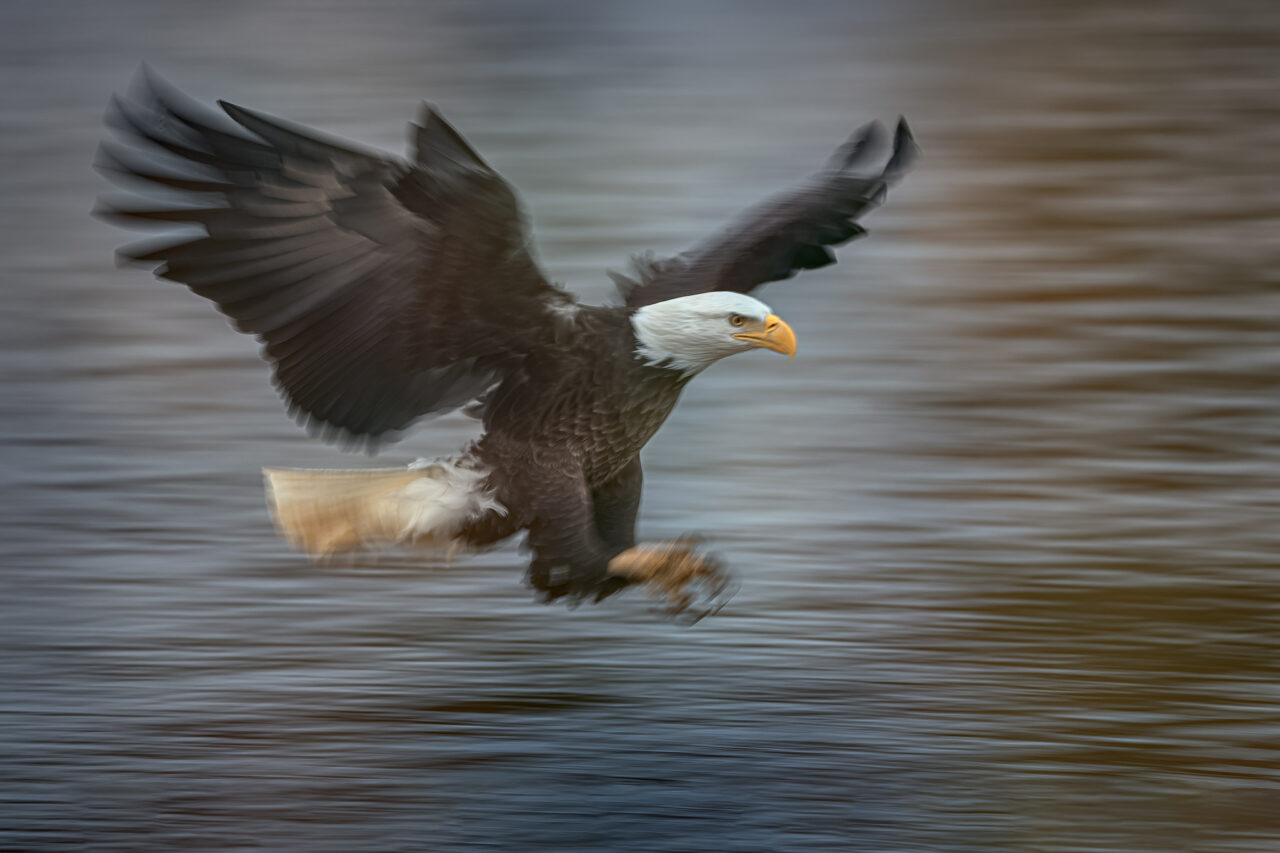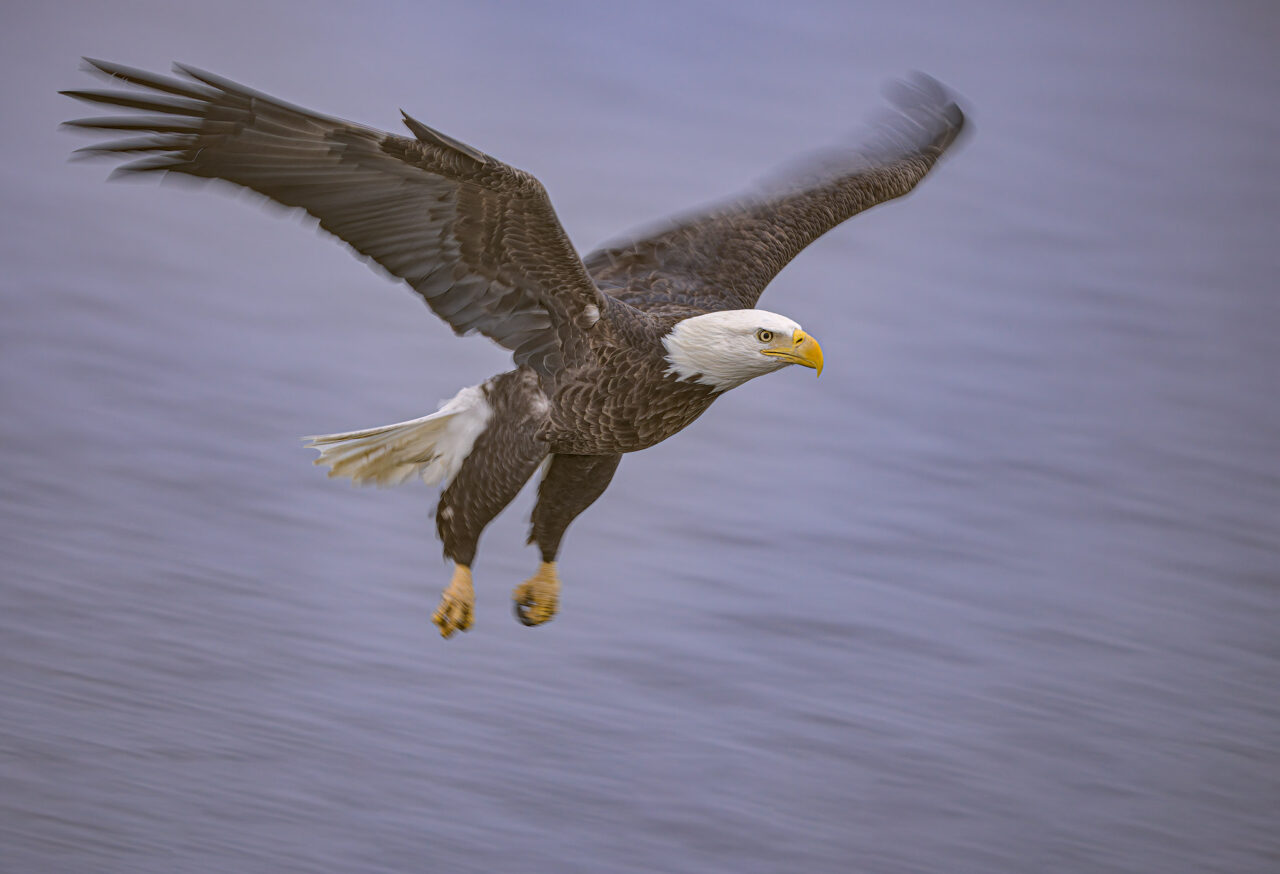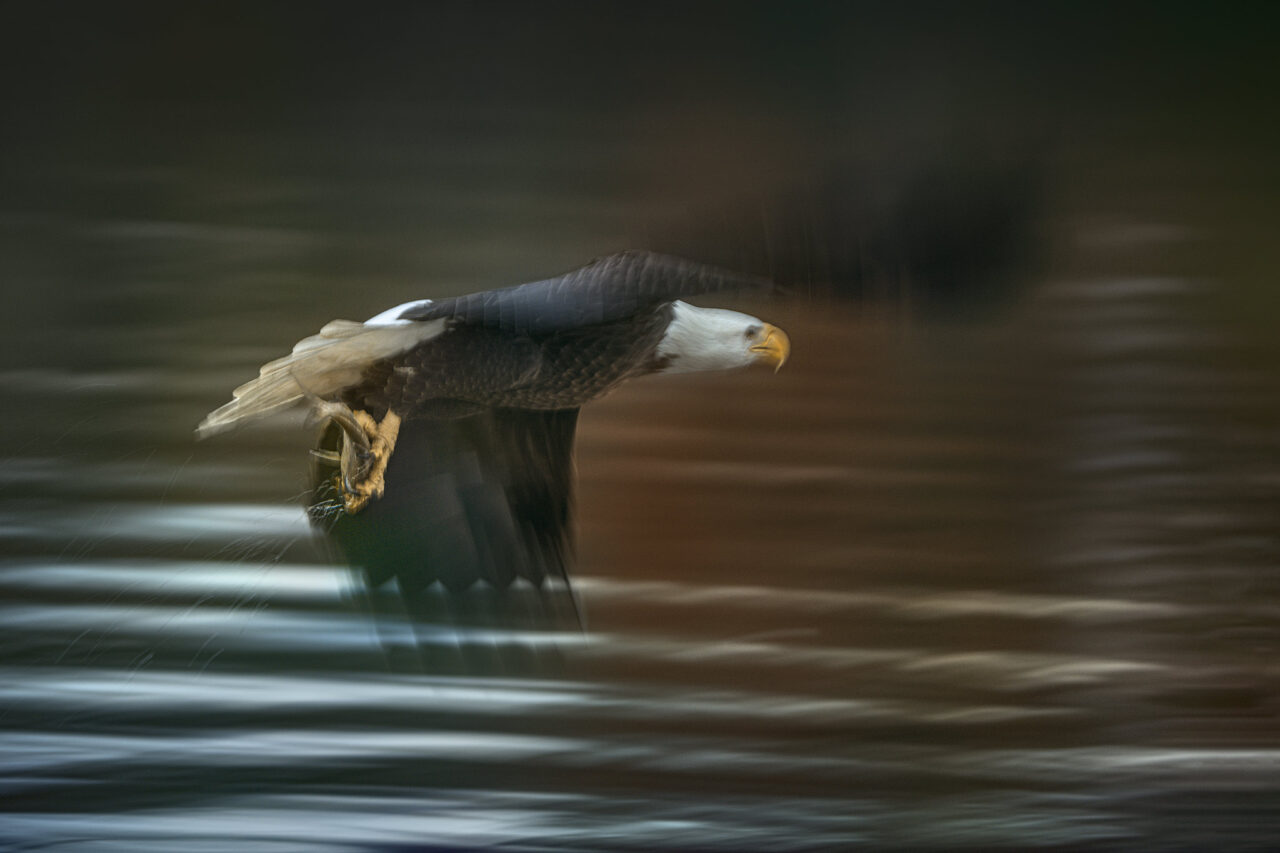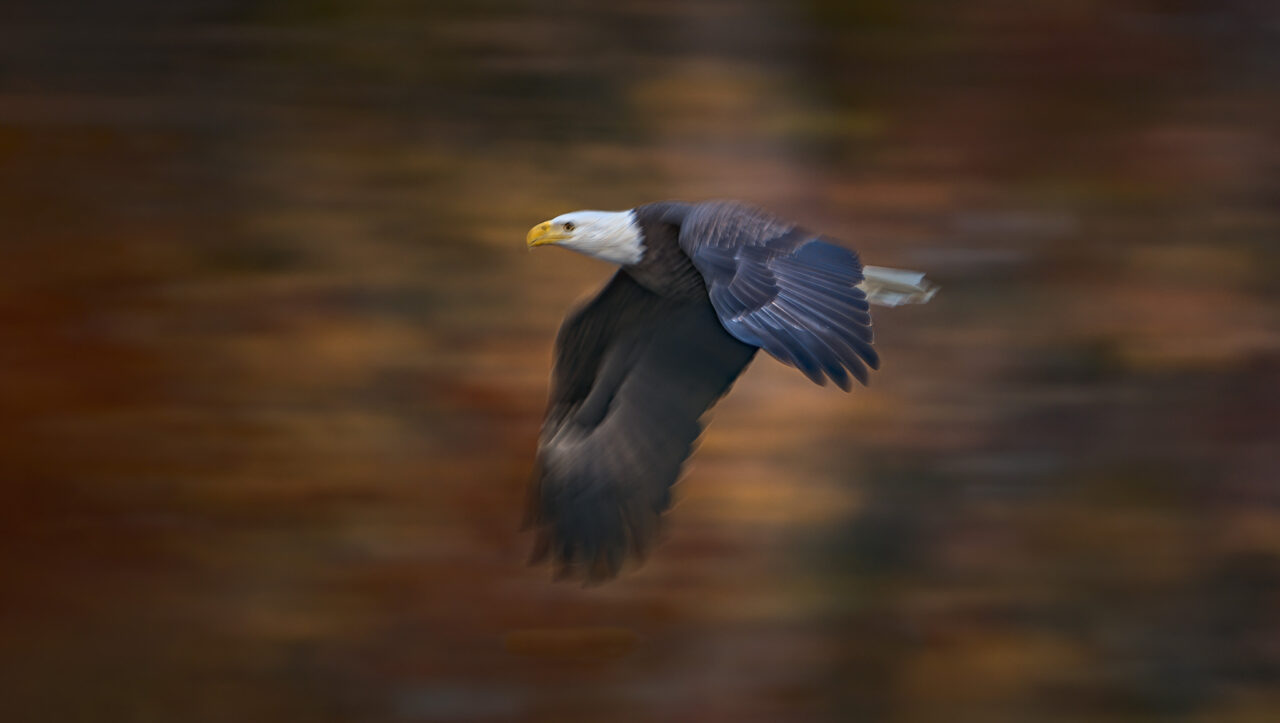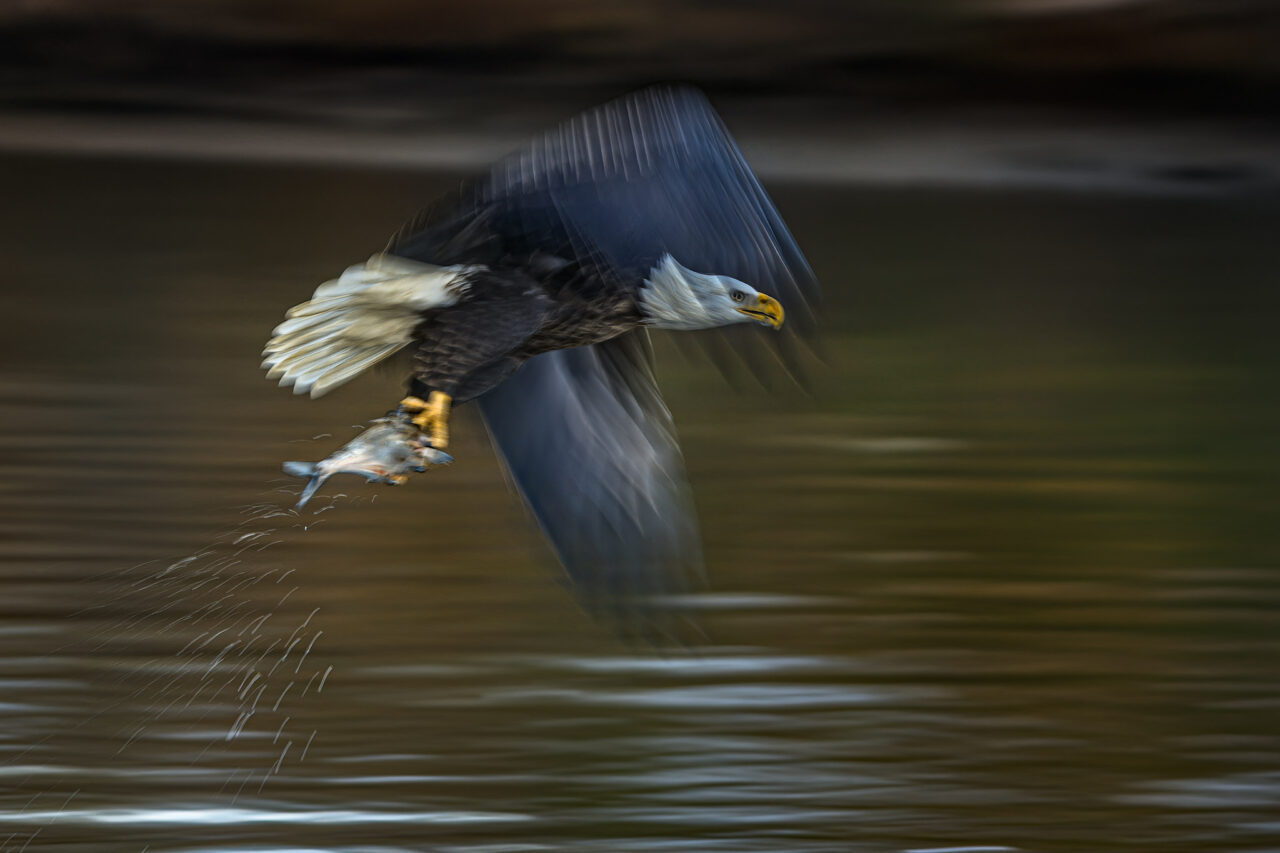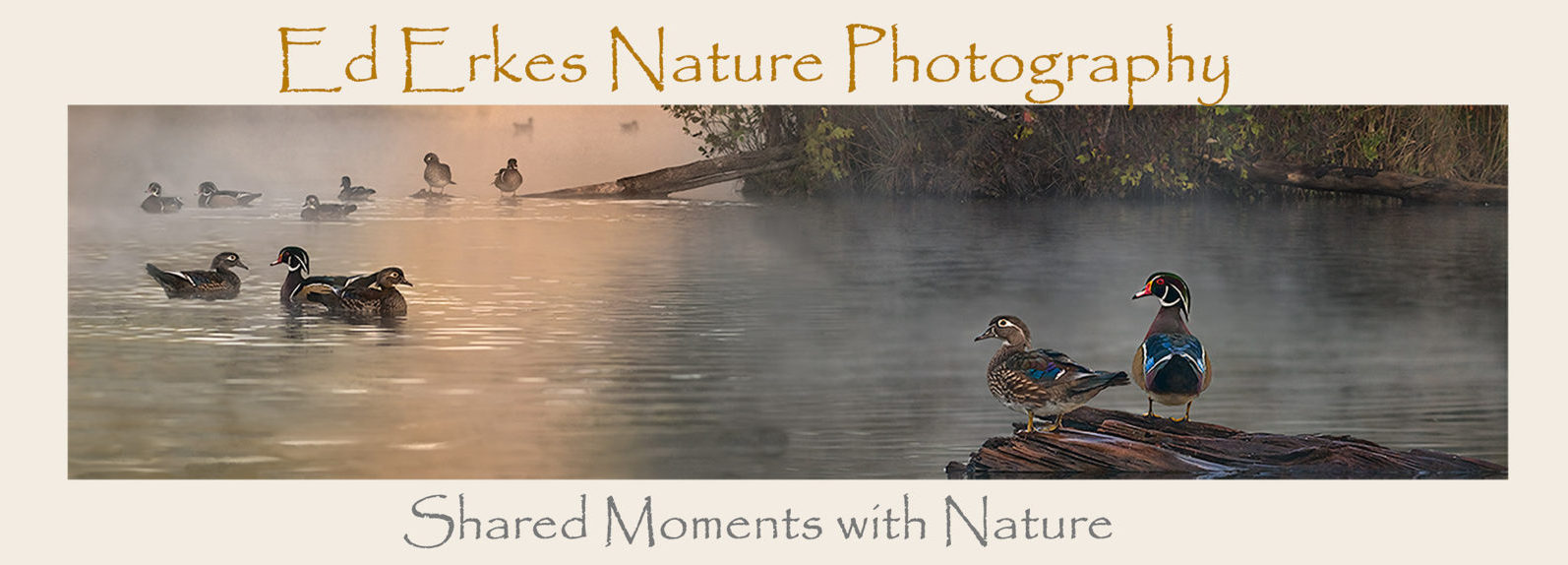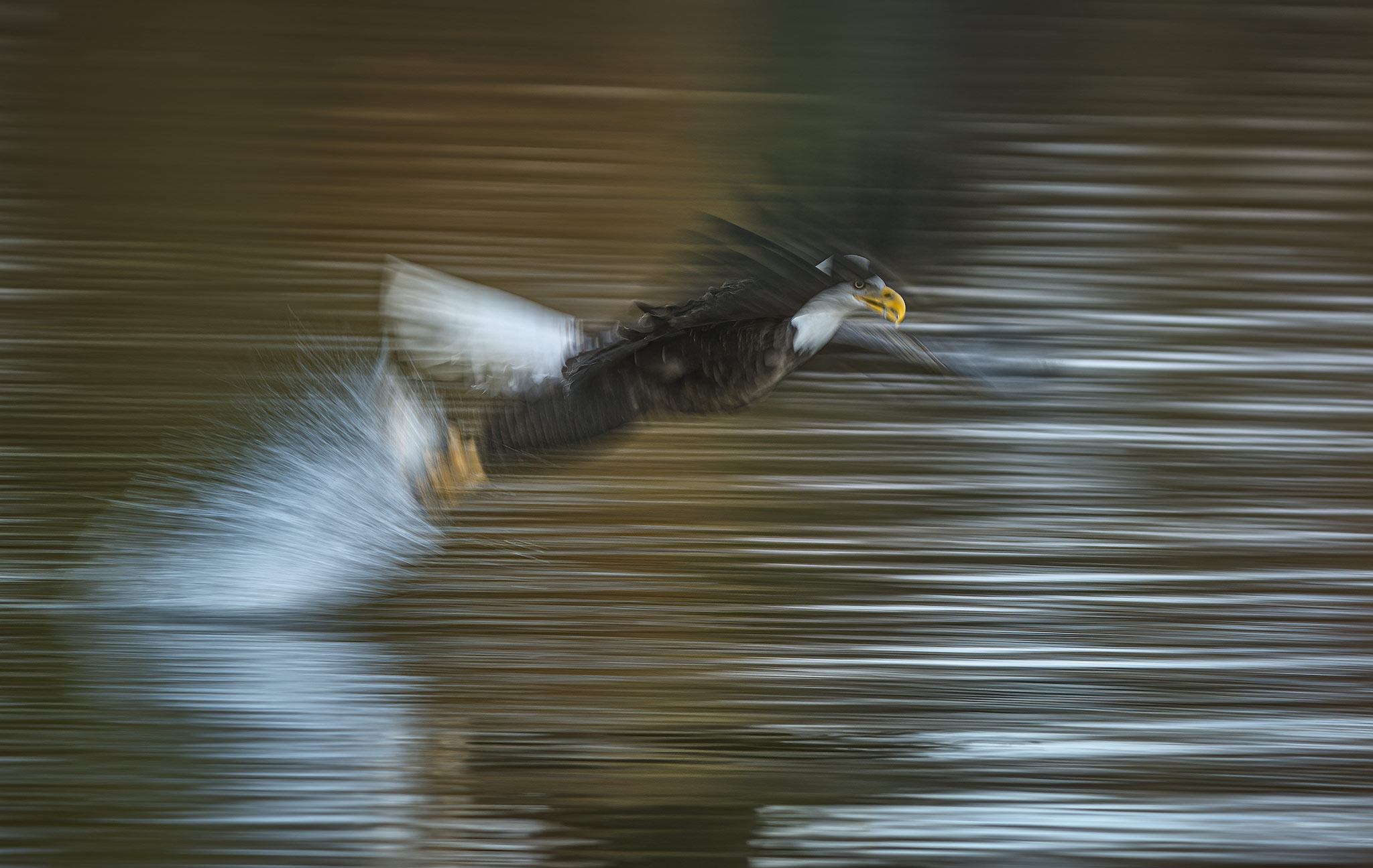When light levels are too low to capture sharp images of wildlife in action, consider using slow shutter speeds and panning the camera with the subject as it moves across the scene. One morning on a James River Eagle tour (for more info on the eagle tours see my earlier blog article), the sky was quite cloudy at sunrise and I was unable to use a fast shutter speed to obtain sharp quality images of the eagles in flight. So I decided to use slower shutter speeds and create what I call pan-blur images of the eagles. I’ll share some of the images I captured that morning and describe the technique in detail.
When you arrive a site in the morning and light levels are too low for sharp action shots, don’t leave your camera in the bag. Take it out and practice pan-blurs. Take it from me, you’ll need the practice because it is not a technique that generates a high success rate. Most of my mages were horribly blurred, but I did get a few images with the head of the bird sharp, or at least acceptably sharp (IMHO). Similarly at the end of the day, as the light levels drop, don’t be so quick to pack up you camera gear, try for some pan-blur images.
The goal of a pan-blur image is to create an image where the moving subject is relatively sharp (or at least the head and part of the body) while the background is pleasingly blurred and streaked. If the subject is too blurred the image is generally a failure, although I occasionally see some heavily blurred impressionistic images that I like.
The background can make or break the shot. A background without texture or detail, such as a clear sky or calm water that is reflecting a featureless sky, will not provide acceptable blurring or streaking.
A subject that is a little smaller in the frame will often work well, for two reasons. First, a smaller subject will appear sharper than a subject that is more magnified in the frame. Second, a larger area of visible background can be a big plus, as the combination of colors and degree of blur/streaking in the background is a large component of a successful image,.
The shutter speed necessary can vary a lot. Typically shutter speeds range between 1/15 and 1/125 second. The faster the subject and the larger the subject is in the frame, the faster the needed shutter speed. All the images below were taken at 1/60s or 1/125s.
If your lens has image stabilization, you will want to use the mode that is designed for panning (i.e. provides stabilization in the vertical dimension but not horizontally).
The key to obtaining a sharp image is to keep the subject in the same position in the frame as you pan the camera. Using a flying eagle as an example, you would use a single AF point or small cluster of points and keep it on the eagle’s head or body as it flies across the scene. Ideally start panning with the bird early and fire a burst when the bird is at the ideal position. Continue panning after the burst to follow through and complete a smooth panning movement. A successful attempt will result in a sharp head and body and a pleasingly blurred and streaked background. Those parts of the eagle that are also moving in different directions than the overall movement of the bird will show blurring. You’ll see it in the wings, tail, legs and feet in the images below.
Again the success rate is generally not high with this technique, but it is a way to capture some nice images when light levels are too low for typical action photography.
